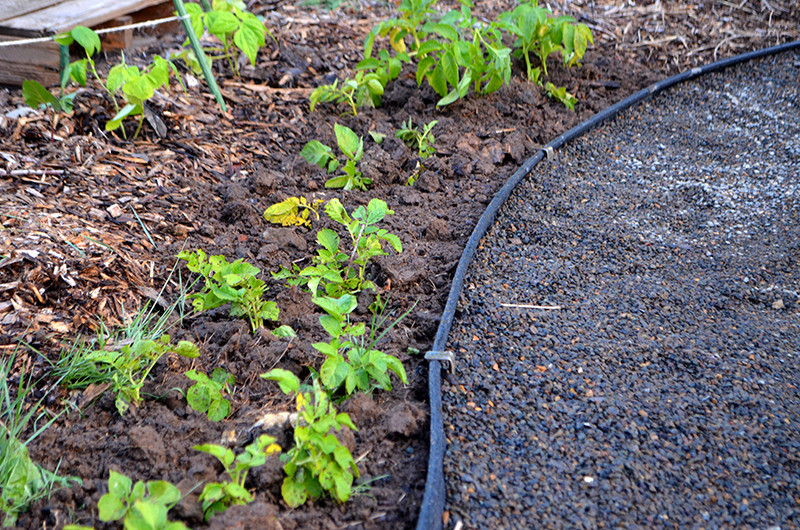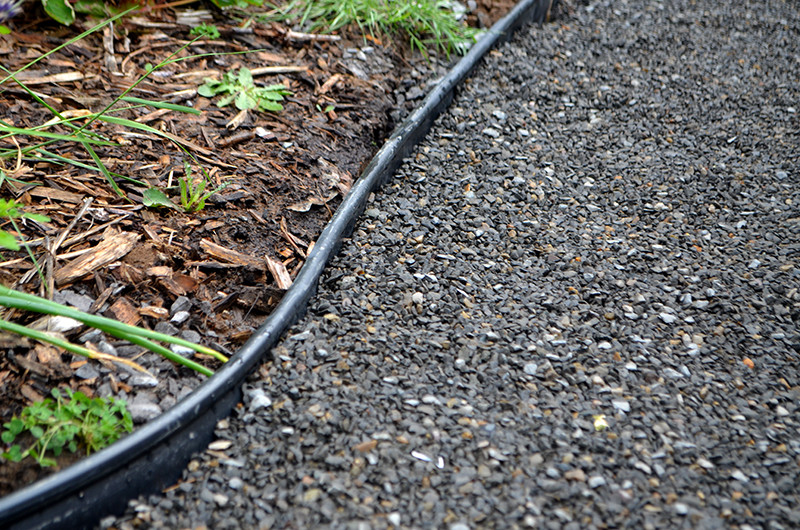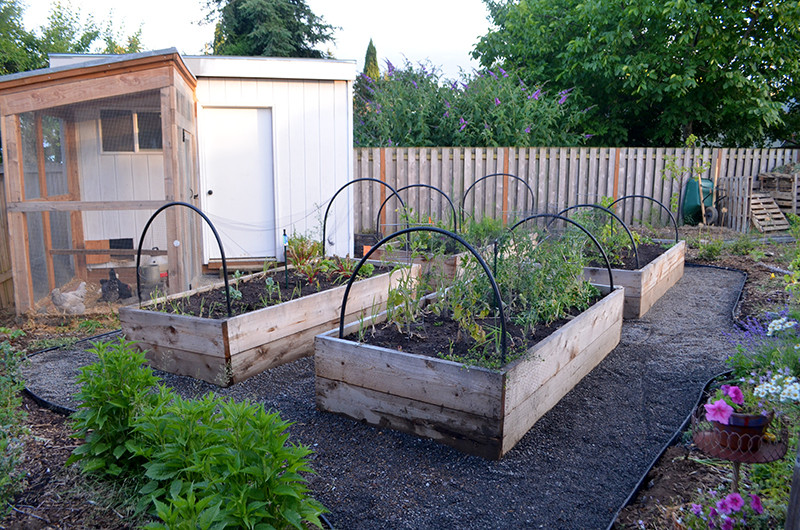Hardscape pathways are essential for creating an organized and visually appealing garden. While features like pergolas or raised beds might seem more exciting, well-designed pathways significantly impact the overall aesthetic and functionality of your outdoor space. For homesteaders and gardeners seeking durable and economical options, Crushed Rock emerges as an excellent choice.
Curving crushed rock pathways enhance garden design and navigation.
In my experience managing gardens and homesteads, I’ve tested various pathway materials, from organic mulches like wood chips and straw to different types of rock. While seemingly inexpensive initially, materials like wood chips, straw, and leaves proved to be short-lived and prone to weed infestation. Round rocks such as pea gravel and river rock, though visually appealing to some, often shift underfoot, creating unstable walking surfaces and eventually becoming breeding grounds for weeds in their gaps.
My background in landscape architecture and years of practical experience have refined my understanding of optimal pathway materials. For both personal and client gardens, I consistently recommend a focused list of effective options: crushed rock, pavers, natural stone (like flagstone), and architectural pavers. These materials range in cost, with crushed rock being the most budget-friendly and architectural pavers representing the higher end of the spectrum.
 pathways-potatoes
pathways-potatoes
Crushed rock hardscaping effectively separates planting space from walking paths, as seen in this potato garden.
Initially, I was drawn to the sleek, modern look of architectural pavers. However, the material cost alone exceeded $5,000, excluding installation expenses. This was simply not feasible for our budget. Therefore, I shifted my focus, deciding that the pathways should blend seamlessly with the garden rather than become a prominent feature. Crushed rock was selected for its understated visual appeal and affordability.
The pathway construction began with excavating to a depth of approximately 6 inches. We then laid a 4-inch base of compacted quarter minus gravel. The angular nature of quarter minus gravel ensures excellent compaction, creating a solid foundation for walking paths. The “fines,” or sand-like particles, within this gravel type fill voids, further stabilizing the base and preventing weed growth from below. Although using gravel alone was an option, it lacks the refined aesthetic we desired for the surface.
To achieve a cleaner finish, we topped the gravel base with a 2-inch layer of quarter ten crushed rock. Quarter ten is a smaller grade of crushed rock, similar in size to pea gravel, but characterized by its sharp edges. This angularity still allows for good compaction, providing a comfortable walking surface. Importantly, quarter ten crushed rock is devoid of “fines,” resulting in a more polished and less dusty appearance.
 pathways-edging
pathways-edging
Black plastic snap edging provides a functional, budget-friendly border for crushed rock pathways.
For edging, we opted for standard black plastic snap edging along the pathway borders. While not my favorite aesthetic choice, it was a practical solution given budgetary constraints. Typically, I advocate for robust edging to maintain pathway integrity, preventing spreading and enhancing the neatness of the design. A superior, albeit pricier, alternative would be 1/4″ steel edging, which develops a beautiful rust patina over time. However, this upgrade would have added over $500 to the project cost.
The final result of the crushed rock pathway installation exceeded my expectations. The total cost was approximately $13 per linear foot for 30-inch wide paths, suitable for wheelbarrow access. This figure encompassed both materials and installation labor – a worthwhile investment, especially while managing garden projects during pregnancy!
These pathways serve as a subtle yet effective backdrop, highlighting the more prominent garden elements like raised beds, play structures, and our flourishing edible plants. They bring a sense of order and tidiness to the garden, even when weeds persist in planting areas. Furthermore, the pathways distinctly delineate different garden zones, from vegetable plots to play spaces and perennial sections.
 pathways-raised-beds
pathways-raised-beds
Crushed rock paths create a neat and tidy appearance, complementing raised garden beds for easy access and low maintenance.
The long-term benefit of properly installed crushed rock pathways is minimal maintenance. This translates to more time spent enjoying the garden’s bounty and less time battling weeds. I encourage you to share your experiences with garden pathways, whether lessons learned or favorite materials, in the comments below!